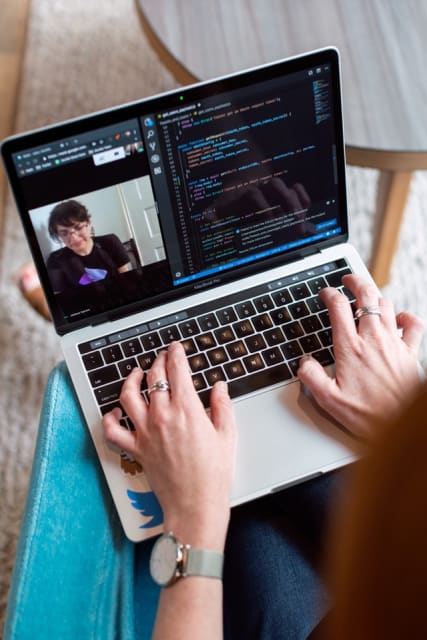We believe that each member of the engineering community has a story that can change the future of engineering. Many of them can lend hope and inspiration to individuals around the world. Engineering.com's Share Your Story series informs and inspires millions of engineering and manufacturing professionals across multiple disciplines by sharing stories of their journey.
Submitted by: John Rae-Grant, Vice President, Product Management and Developer Relations at DataStax
As COVID-19 spread across the globe in early 2020, developer advocacy changed dramatically. Developer advocacy involves how companies and open-source projects present their work to software engineers, educating them on what their projects can deliver and getting feedback from the community on how to make them better.
Even before the pandemic, those of us who work to attract and empower software engineers could see demand for content that was more accessible, available in more languages and more scalable. The pandemic hurtled developer advocacy years into the future, as it took away some of the traditional ways to keep in touch, such as physical events. After eighteen months, we can look back and see how losing some of our trusted tactics actually made developer advocacy better for everyone.
Like almost every other company in the world, we had to adapt quickly when lockdowns started taking place. At DataStax, four percent of our people are dedicated to Developer Relations. We had all this developer advocacy muscle, but in early 2020, we quickly found that much of what we were doing was not applicable in a COVID-19 world.
With the sudden shift to online-only workshops, we were concerned about losing everything that developers enjoyed about attending in-person events, such as meeting their peers, getting support during training exercises and having the ability to ask questions about their specific use cases.

(Stock image.)
How could we recreate the experience of being together and having one-on-one instructor interaction that made in-person events so valuable? Traditional webinar and conferencing solutions did not provide the same level of interaction—and satisfaction—that our in-person training events produced. So, we decided to explore some unconventional solutions.
Here’s what we knew we wanted:
- Interactivity: An opportunity for developers to ask their questions and get answers in real time.
- Approachability: A colloquial, fun, playful, developer-to-developer presence.
- Feedback: Real-time feedback from developers to help us constantly improve the workshops and our products.
- Flexibility: Multiple formats so that developers can proceed at their own pace and learn in their own way.
- Availability: The ability to sign up and get reminders for events without any manual action from our team.
- Credentials: Incentives for developers to prove they have mastered the work.
- Massive Scale: The ability to touch many more developers, without losing the intimate feeling of real, human advocates who care about developers’ success.
For each of these desired traits, we had to experiment with and learn the right services, the right integrations and rapidly evolve our internal processes. We gauged developer reaction as we went along and pushed the boundaries of a whole range of technologies including Discord, Discourse, YouTube, Twitch, Menti, Badgr, GitHub, GitPod, Orbit, Glitch and KataCoda. Following this, we’ve been able to turn this alphabet soup of services into a workshop engine, and touch thousands of developers with strong positive feedback.
So, what were the lessons we learned?
Developer advocacy became more consumable.
Before, the traditional approach around developer advocacy was high-touch and in-person. In the future, training for software engineers will be increasingly delivered online. The economics of transporting bodies around is rarely going to make sense. The enduring impact from this is that developer training will become more democratized.
This is especially true in the developing world, where the cost of travel and conference registrations continues to be prohibitive. Now, travel cost is no longer a gate on learning and professional development. By removing one of the biggest barriers to learning, it has become easier to attract attendees from all over the world. Advocacy has also become more inclusive because it can now be offered to everyone at marginal cost with fewer barriers to participation for those from disadvantaged backgrounds.
With more accessibility, discovering and nurturing new talent may become easier in the future. In addition to teaching more people more things, online advocacy makes it easier for all people to connect with companies that need them from anywhere in the world. This is particularly true for the open-source community where community contribution is a path to ascendancy for talent.
Our Developer Advocates experienced quality of life improvements.
Prior to the pandemic, travel was a fact of life for our Developer Advocates. For example, our DevRel teams traveled to 39 conferences and customer workshops throughout the world in 2019.
Anyone who has spent a lot of time in airports knows how difficult that amount of travel can be. Lockdowns during the pandemic had a significant impact on quality of life for our team: not only were they not going into an office every day, but they also weren’t having to get on planes to events anymore.
Their job satisfaction increased, but this shift also had a significant impact on how they approach their work. Most Developer Advocates share a passion for their work and the community of developers and software engineers they serve. They want the feedback—even the bad stuff—because it provides raw material to improve the project or the product. Our team quickly realized that they could reach more developers than ever before, and they had the time to think more creatively about how to best help those developers.
Another thing we’ve observed is that the face-to-face interaction you get at an in-person conference rarely gets captured. You get more depth in the moment, but that doesn’t necessarily continue or accrue to a lasting record. In contrast, every online interaction with a developer is recorded, recallable and easy to track, making it easier to use the feedback to improve our products.
The pandemic opened up our technology to a worldwide audience—one that was more able to find us and engage through digital channels.
When you rely on physical access to an audience for engagement, you are limited to that event and that time. While that audience might be engaged, it will be small. The biggest benefit of hosting virtual events is the volume of people you can target. Since you are no longer confined to that one room in one building in one city, the world becomes your big open room.

(Stock image.)
This is particularly important when you remember that the tech industry is a globally distributed talent pool. According to GitHub, there are more than 56 million developers distributed across the world. We learned that we could use the two-sided markets of Search and Ads to find our audience and have them find us, with no one having to get on a plane.
However, finding your developers is not just a technical challenge, but also something that you have to do right in terms of engagement and reach. For instance, when developers everywhere were forced out of their offices and almost exclusively onto digital channels, we found ourselves publishing digital content in an exponentially more competitive landscape. Whereas in-person developer events are somewhat of a captive audience, online you are competing with every other source of education and entertainment on the Internet. To get a good return on investment in this environment, you have to be entertaining and informative.
Every piece of content or training you produce has to be designed with your engineer or developer’s needs in mind, providing them with a great experience so they can simultaneously learn and develop an affinity with you. Production quality matters. Tone matters. And engagement matters. If the experience you create is unapproachable or boring, you’ve already lost before you even roll it out.
COVID-19 was undeniably a huge challenge for businesses in every industry. In the future, as business leaders begin to look back on their experience during the pandemic, many will find that some of the challenges they faced actually pushed them where they needed to go. While such rapid change can be difficult, hopefully leaders will find that COVID-19 accelerated them into a better place, making them stronger and more resilient than they were before.
About the Author
John Rae-Grant is Vice President of Product Management and Developer Relations at DataStax. He started his career with ten years building and then leading developer tools (Visual C++) and developer relations (MSDN) at Microsoft. This was followed by roles in consulting and as a CTO and Founder in software companies. Prior to DataStax, John spent six years at Google as a product leader for Gmail, Google Play Services and Google Cloud's Developer Tools. John holds a B.Sc. in Computer Science from Yale University.